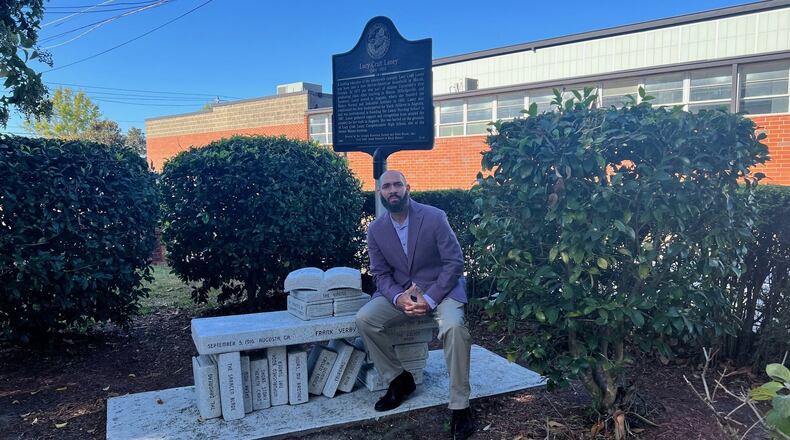Corey Rogers loves sharing stories. But the stories he shares aren’t his own.
They are the stories of men and women whose lives made an impact on Augusta. Rogers spent the last 20 years finding different ways to tell the often untold stories through historical markers and public art projects, many of which are contained in a historically Black district of Augusta called the Golden Blocks.
“I’ve always thought our history has either been secondary or overlooked. It became this internalized thing through the vehicle of public history, through these markers, that I would try to tell the story of Augusta,” said Rogers, executive director of the Lucy Craft Laney Museum of Black History.
Credit: Charmain Brackett
Credit: Charmain Brackett
Rogers joined the museum staff 20 years ago when a Georgia Historical Society marker in honor of Lucy Craft Laney, a pioneering educator, was erected. That piqued Rogers’ curiosity about the process.
In 2007, Augustan John M. Tutt was inducted into the Georgia Sports Hall of Fame, and once again, Rogers became interested in historical markers and collaborated with members of the Zeta Xi Omega chapter of Alpha Kappa Alpha to get one in Tutt’s honor. It was placed in 2008.
“From there, I either initiated these on my own or once my name got out into the public sphere, people came to me,” said Rogers who became the museum’s executive director in April 2023.
Many historical markers across the state highlight a church or another building, but Rogers’ focus on many of the markers he’s worked on has been on the people associated with the buildings.
“Back in the day, people would apply for markers with sort of a basic standard — it was a church; it was 100 years old, and that was it. Nowadays, it’s more interesting, and the stories are more complex,” he said.
Some of the markers he’s worked on have included ones for Amanda America Dickson Toomer (1849-1893), the biracial daughter of a plantation owner who became one of the wealthiest women in America; John Wesley Gilbert (1863-1923), who was the first African American archaeologist; and writer Frank Yerby (1916-1991), a bestselling author whose books were turned into several films in the 1940s and 1950s.
Rogers served on the historical society’s marker committee and as its chair for several years. He’s also assisted other minority organizations such as the Chinese Consolidated Benevolent Society of Augusta and the Augusta Jewish Museum in their efforts to obtain state historical markers.
In addition to the state markers, there are local markers for people who he said are important to Augusta’s history but who might not be recognized outside the city.
Rogers also serves as the president of the Augusta African American Historical Society, which for more than 20 years, has placed its own historical monuments to share more stories. He also worked with the Greater Augusta Arts Council to add a public art component.
Several murals highlight different aspects of life in Augusta. One features the Golden Blocks area as a mecca for Black businesses and culture in the city; another highlights African American women in education and one in the progress focuses on arts and entertainment. A sculpture pays homage to the men and women in medicine.
His work is far from done; there are many other stories waiting to be told, he said.
“I see myself as a conduit for this history,” he said. “I can tell these stories, and people seem to enjoy hearing about them. As they continue to enjoy them, I’ll continue to tell them.”
HOW TO HELP
For more information, visit the museum’s website at lucycraftlaneymuseum.com.
To learn how to donate, go to lucycraftlaneymuseum.com/how-to-help/.
About the Author
More In This Series
Everyday Heroes: Fayette County man remains devoted to clearing area of litter
Everyday Heroes: Evans man’s extreme bike rides raise money for cancer research
Everyday Heroes: Lawrenceville teen brings joy to pediatric patients
Everyday Heroes: Atlanta woman creates nonprofit to give back and break boundaries


